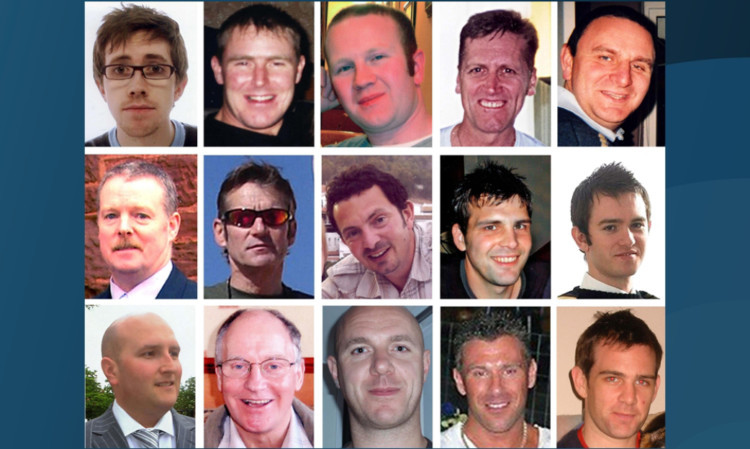An eyewitness has described the moment a helicopter fell “like a torpedo” into the North Sea, claiming 16 lives.
The account was given on the first day of a fatal accident inquiry (FAI) almost five years after the Super Puma plunged into the water off the Aberdeenshire coast.
Lidvar Olav Hildre, a ship’s mechanic, was painting a railing on board the Normand Aurora, a platform supply boat sailing to Norway.
He heard a helicopter making a “normal buzzing noise” above the ship.
“Apart from the helicopter noise I didn’t hear anything else – then suddenly there was silence,” he said in a statement to police which was read out at the inquiry in Aberdeen.
“This made me look into the air, as this was unusual, and I saw on the starboard side of us an oblong shape falling like a torpedo towards the sea.”
The weather was good with clear conditions and a calm sea, he said.
“The object was obviously a helicopter but I couldn’t believe what I was seeing. It fell silently towards the sea. I don’t think there was any smoke or anything coming from the helicopter at that point.
“Just before the helicopter hit the sea, or just as the helicopter hit the sea, I cannot be sure which, I saw one flame come from the helicopter. I couldn’t say exactly where on the helicopter this came from.
“There was then a big splash as the helicopter hit the sea in a bang, then there was white smoke.
“After this I then saw, quite clearly, four large black rotor blades all attached together falling out of the sky towards the sea, separate from the helicopter.
“The rotor probably hit the sea around the same place as the helicopter but I never saw it hit.”
He heard a bigger bang as he ran to report what he saw to his superiors, who prepared to launch a fast boat.
Debris was spread in pieces around an area about 100 metres in diameter. Details of the search were relayed to him on board the Normand Aurora.
Eight bodies were on the surface, tied together by rescuers to prevent them floating away. As the only eyewitness account was read out, family members in the public gallery sat silently, some wiping tears from their eyes.
Fourteen oil workers and two crew were killed when the aircraft hit the sea on April 1 2009.
Many of them worked for KCA Deutag Drilling and were returning from BP’s Miller platform when the helicopter’s main rotor gearbox suffered a “catastrophic failure”.
The inquiry, expected to last about six weeks, will examine the circumstances of the crash in order to prevent any future tragedy.
